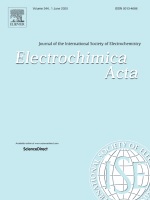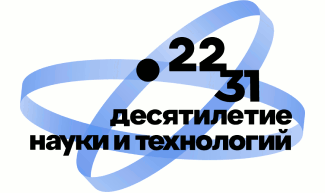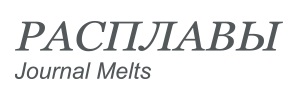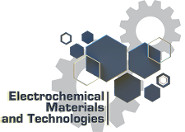Сотрудник института, докт. хим. наук. Дмитрий Медведев, выступил в качестве  приглашенного редактора ведущего научного журнала в области электрохимии – Electrochimica Acta. Итогом этой деятельности стало формирование специального выпуска, посвященного вопросам применения метода распределения времен релаксации (DRT, distribution of relaxation times) для анализа спектров импеданса и понимания процессов, протекающих в твердооксидных электрохимических устройствах.
приглашенного редактора ведущего научного журнала в области электрохимии – Electrochimica Acta. Итогом этой деятельности стало формирование специального выпуска, посвященного вопросам применения метода распределения времен релаксации (DRT, distribution of relaxation times) для анализа спектров импеданса и понимания процессов, протекающих в твердооксидных электрохимических устройствах.
После анонсирования данного спецвыпуска были приняты около тридцати заявок для участия в нём. Однако жёсткий процесс рецензирования (для некоторых работ состоялось четыре раунда по переработке рукописи!) отсеял значительную часть отправленных работ. В результате были приняты и опубликованы 16 статей (в том числе, 4 статьи, написанные сотрудниками нашего института), которые были тематически распределены по трём секциям, см. ниже (дополнительная информация представлена также в Tw).
Дмитрий Медведев выражает огромную благодарность всем авторам и рецензентам, принявшим участие в формировании этого уникального спецвыпуска!
Journal: Electrochimica Acta →
Special issue: Distribution of Relaxation Time Analysis for Solid State Electrochemistry →
I: Advances in DRT Application
1.1. S. Dierickx, A. Weber, E. Ivers-Tiffée, How the distribution of relaxation times enhances complex equivalent circuit models for fuel cells, Electrochimica Acta 355 (2020) 136476. https://doi.org/10.1016/j.electacta.2020.136764.
1.2. M. Hahn, D. Rosenbach, A. Krimalowski, T. Nazarenus, R. Moos, M. Thelakkat, M.A. Danzer, Investigating solid polymer and ceramic electrolytes for lithium-ion batteries by means of an extended distribution of relaxation times analysis, Electrochimica Acta 344 (2020) 136060. https://doi.org/10.1016/j.electacta.2020.136060.
1.3. A.L. Gavrilyuk, D.A. Osinkin, D.I. Bronin, On a variation of the Tikhonov regularisation method for calculating the distribution function of relaxation times in impedance spectroscopy, Electrochimica Acta 354 (2020) 136683. https://doi.org/10.1016/j.electacta.2020.136683.
1.4. J. Xia, C. Wang, X. Wang, L. Bi, A perspective of DRT analysis for electrodes in solid oxide cells, Electrochimica Acta 349 (2020) 136328. https://doi.org/10.1016/j.electacta.2020.136328.
1.5. A. Kežionis, E. Kazakevičius, Some features of the analysis of broadband impedance data using distribution of relaxation times, Electrochimica Acta 349 (2020) 136379. https://doi.org/10.1016/j.electacta.2020.136379.
1.6. A.A. Kolchugin, A.N. Meshcherskikh, L.A. Dunyushkina, Across-plane electrical conductivity of ytterbium-doped HfO2 film using impedance spectroscopy and DRT analysis, Electrochimica Acta Х (2020) 136834. https://doi.org/10.1016/j.electacta.2020.136834.
II: DRT for Analysis of Solid Oxide Electrochemical Cells
2.1. H. Sumi, H. Shimada, Y. Yamaguchi, T. Yamaguchi, Y. Fujishiro, Degradation evaluation by distribution of relaxation times analysis for microtubular solid oxide fuel cells, Electrochimica Acta 339 (2020) 135913. https://doi.org/10.1016/j.electacta.2020.135913.
2.2. Z. Xu, X. Hu, Y. Wan, S. Xue, S. Zhang, L. Zhang, B. Zhang, C. Xia, Electrochemical performance and anode reaction process for Ca-doped Sr1.5Fe1.5Mo0.5O6–δ as electrodes for symmetrical solid oxide fuel cells. Electrochimica Acta 341 (2020) 136067. https://doi.org/10.1016/j.electacta.2020.136067.
2.3. G. DiGiuseppe, A. Hunter, F. Zhu, Combined equivalent circuits and distribution of relaxation times analysis and interfacial effects of (La0.60Sr0.40)0.95Co0.20Fe0.80O3–x cathodes, Electrochimica Acta 350 (2020) 136252. https://doi.org/10.1016/j.electacta.2020.136252.
2.4. A. Mroziński, S. Molin, P. Jasiński, Study of oxygen electrode reactions on symmetrical porous SrTi0.30Fe0.70O3–δ electrodes on Ce0.8Gd0.2O1.9 electrolyte at 800 °C – 500 °C. Electrochimica Acta 346 (2020) 136285. https://doi.org/10.1016/j.electacta.2020.136285.
2.5. M. Ghamarinia, A. Babaei, C. Zamani, Electrochemical characterization of La2NiO4-infiltrated La0.6Sr0.4Co0.2Fe0.8O3–δ by analysis of distribution of relaxation times. Electrochimica Acta 353 (2020) 136520. https://doi.org/10.1016/j.electacta.2020.136520.
2.6. X. Meng, Y. Wang, Y. Zhao, T. Zhang, N. Yu, X. Chen, M. Miao, T. Liu, In-situ exsolution of nanoparticles from Ni substituted Sr2Fe1.5Mo0.5O6 perovskite oxides with different Ni doping contents, Electrochimica Acta 348 (2020) 136351. https://doi.org/10.1016/j.electacta.2020.136351.
III: DRT for Analysis of Protonic Ceramic Electrochemical Cells
3.1. D. Xie, A. Ling, D. Yan, L. Jia, B. Chi, J. Pu, J. Li, A comparative study on the composite cathodes with proton conductor and oxygen ion conductor for proton-conducting solid oxide fuel cell, Electrochimica Acta 344 (2020) 136143. https://doi.org/10.1016/j.electacta.2020.136143.
3.2. A.P. Tarutin, G.K. Vdovin, D.A. Medvedev, A.A. Yaremchenko, Fluorine-containing oxygen electrodes of the nickelate family for proton-conducting electrochemical cells, Electrochimica Acta 337 (2020) 135808. https://doi.org/10.1016/j.electacta.2020.135808.
3.3. Y. Zhao, K. Zhang, Z. Wei, Z. Li, Y. Wang, Z. Zhu, T. Liu, Performance and distribution of relaxation times analysis of Ruddlesden-Popper oxide Sr3Fe1.3Co0.2Mo0.5O7–δ as a potential cathode for protonic solid oxide fuel cells, Electrochimica Acta 352 (2020) 136444. https://doi.org/10.1016/j.electacta.2020.136444.
3.4. A.V. Kuzmin, М.S. Plekhanov, A.S. Lesnichyova, Influence of impurities on the bulk and grain-boundary conductivity of CaZrO3-based proton-conducting electrolyte: a distribution of relaxation time study, Electrochimica Acta 348 (2020) 136327. https://doi.org/10.1016/j.electacta.2020.136327.




